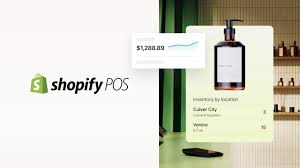If you’re considering moving your ecommerce and point-of-sale operations to Shopify, you’re already on the right path. A modern, unified commerce platform can transform the way you sell, operate, and grow. But a full migration—especially one that includes POS, ecommerce, historical data, and hardware—can be complex.
To help you make a confident decision, we recommend this Guide: Store Migration to Shopify: Planning, Platform Selection, and Maximizing ROI.
This free resource outlines the complete migration process, estimated costs, the pitfalls to avoid, and how to determine whether switching platforms is truly the right move for your business.
Why Store Migrations Can Be Tricky—Especially with POS + Ecommerce
Migrating both ecommerce and point-of-sale systems to Shopify is not simply a “data transfer.” It often involves:
- Maintaining your entire order history
- Keeping your full product catalog intact
- Avoiding duplicated products, variants, or customers
- Ensuring barcodes and inventory stay clean and functional
- Migrating customer profiles and loyalty data
- Setting up new hardware and POS workflows
These elements, if not handled carefully, can cause major issues in your Shopify dashboard—messy duplicates, broken barcodes, or missing historical data. This is why planning is everything.
The Planning Phase: Your Timeline, Your Store, Zero Downtime
A smooth migration should begin with an initial planning and discovery call. During this session, your migration team should review:
- Your ideal go-live date
- Ecommerce and POS deployment timelines
- Shopify plan selection
- Hardware requirements
- Any special workflows or integrations
From there, the process should include:
- A mid-migration check-in to ensure everything is on track
- Deployment day support, so you’re not left alone when the switch happens
- Hands-on onboarding, ensuring your team feels confident with Shopify’s hardware, POS interface, and day-to-day operations
Our team specializes in workshops and live support sessions so you feel empowered, comfortable, and ready to run your business on Shopify from day one.
The good news? Shopify POS Pro is truly intuitive right out of the box. With the right setup, your staff will adapt quickly.
Maximizing ROI: Shopify’s Real Power Lies in Omnichannel
Once you’re on Shopify, the platform becomes a growth engine—if it’s configured properly.
To get the best ROI out of your migration, you should be leveraging:
Omnichannel capabilities
- Buy Online, Pick Up In-Store (BOPIS)
- Unified customer profiles with historical data
- Integrated inventory across all locations and channels
Unified commerce features
- Seamless selling on Facebook/Instagram
- Pinterest and TikTok shopping
- Google Merchant Center integration
- Shopify’s built-in marketing and automation tools
A qualified migration team won’t just move your data—they’ll ensure you’re set up to capitalize on all these features.
Common Pitfalls: What We’ve Seen After Migrating Stores Across North America & Europe
After helping numerous Lightspeed, Square, and other platform users transition to Shopify, here are the biggest recurring issues we see business owners struggle with when they migrate alone or with inexperienced teams:
- Broken or mismatched barcodes
- Massive amounts of duplicates (products, variants, customers, inventory items)
- Incorrect inventory levels
- Theme setup issues causing poor UX or a drop in conversions
- SEO loss due to improperly migrated product pages
This is why our approach ensures:
✔ Clean data, no duplicates
✔ Functional barcodes across all products and locations
✔ A plug-and-play switch from Lightspeed/Square to Shopify
✔ Optional SEO optimization to help your products rank and drive traffic immediately
Ready to Explore Whether Shopify Is the Right Next Step?
A platform switch is a big move—but the right preparation makes it dramatically easier.
If you’d like guidance, a migration plan, or just a conversation about your store’s needs, we’re here to help.
If you'd like, I can also:
✔ add SEO keywords,
✔ format this as a LinkedIn article,
✔ or adjust the tone (more formal, more sales-oriented, more conversational, etc.).








